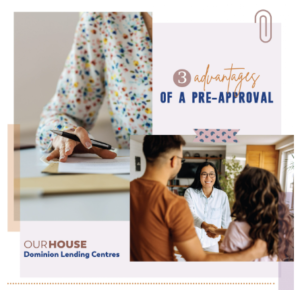
The Rate Debate
One of the first questions that potential buyers want to be answered is: “What is your interest rate?”
It is easy to think that this is the most important question, but there is a lot more to your mortgage contract than just the rate. And so, the rate debate continues!
The rate debate is a hot topic in the mortgage world. Not just the rates itself, but the importance of the rate versus other factors in the mortgage – such as terms and penalties. As a borrower, it can be easy to get caught up in one thing but, if you’re not paying close attention, ignoring other factors could cost you in the long run.
Before we get into these other factors, let’s talk rate. While not the only factor, it does continue to be an important decision criteria with any mortgage product. The interest rate is the percentage of interest you are paying on the principal loan; lower interest rates means more money to the mortgage and who doesn’t want that?
VARIABLE VS. FIXED
There are two types of mortgage rates: variable-rate and fixed-rate. A fixed-rate is just that – a fixed amount of interest that you would pay for the term of the mortgage. A variable-rate, on the other hand, is based off of the current Prime Rate, and can fluctuate depending on the markets.
Fixed rates are typically tied to the world economy where the variable rate is linked to the Canadian economy. When the economy is stable, variable rates will remain low to stimulate buying.
Fixed-Rate Mortgage: First-time homebuyers and experienced homebuyers typically love the stability of a fixed rate when just entering the mortgage space. The pros of this type of mortgage are that your payments don’t change throughout the life of the term. However, should the Prime Rate drop, you won’t be able to take advantage of potential interest savings.
Variable-Rate Mortgage: As mentioned, variable-rate mortgages are based on the Prime Rate in Canada. This means that the amount of interest you pay on your mortgage could go up or down, depending on the Prime. When considering a variable-rate mortgage, some individuals will set standard payments (based on the same mortgage at a fixed-rate), this means that should Prime drop and interest rates lower, they are paying more to the principal as opposed to paying interest. If the rates go up, they simply pay more interest instead of direct to the principal loan. Other variable-rate mortgage holders will simply allow their payments to drop with Prime Rate decreases, or increase should the rate go up. Depending on your income and financial stability, this could be a great option to take advantage of market fluctuations.
BEYOND RATES
When considering your mortgage, other considerations such as penalties can be important factors for deciding on a mortgage product. If you have two competing products, say 1.65% interest fixed-rate and a 1.95% interest variable-rate, it seems as though it is a pretty easy decision. But, what about the ability to make extra payments? And what are the penalties?
It is easy to think that nothing will change throughout your 5-year mortgage term, so you probably haven’t even considered the penalties. However, when looking at the fixed versus variable rate mortgage, penalties can be quite different. Where variable rates typically charge three-months interest, a fixed rate mortgage uses an Interest Rate Differential (IRD) calculation.
Given that nearly 70% of fixed mortgages are broken before the term ends, this is an important variable. Fixed-rate mortgages are typically okay when the penalty is your contract rate versus the Benchmark rate. However, when penalties are based on the Benchmark rate (sometimes called the Bank of Canada rate), it is typically much higher than your contract rate, resulting in greater penalties.
In some cases, penalties for breaking a fixed mortgage can sometimes be two or three times higher than that of a variable-rate. While the interest rate is lower, lower penalties are sometimes best should anything happen down the line.
CONVENTIONAL VS. HIGH-RATIO MORTGAGE
Another consideration beyond just the interest rate, is whether or not you will be obtaining a conventional or a high-ratio mortgage. Whenever possible, it is recommended to put 20 percent down payment on a new home. This results in a conventional mortgage. However, as not everyone is able to do this, many buyers will end up with a high-ratio mortgage product.
So, what does this mean?
High-ratio mortgages need to be insured by either Genworth Financial, the Canada Mortgage and Housing Corporation (CMHC), or Canada Guaranty. This is due to the Bank Act, which will only allow financial institutions to lend up to 80 percent of the homes purchase price WITHOUT mortgage default insurance. Insurance on the mortgage is important to protect the lender should you default on your payments, leaving the insurer to deal with the borrower.
The difference between conventional and high-ratio mortgages is that high-ratio mortgages require insurance, which results in an insurance premium. This is added to and paid along with the mortgage, but is an important factor when considering your monthly payments. These premiums are based on the loan to value (LTV), which is the amount of the loan versus the value of your home.
All high-ratio mortgages are regulated to have mortgage insurance, but some homeowners with a conventional mortgage may choose to pay for mortgage insurance to get a better rate.
SMART QUESTIONS TO ASK
To ensure you understand your mortgage contract, and how it could affect you now and in the future, we have compiled a few smart questions to ask before you sign.
- What is my interest rate? Can I qualify for a better one?
- Do you recommend fixed or variable-rate?
- What are the penalties for breaking my mortgage?
- Are there any pre-payment penalties?
- Will I require mortgage insurance? If so, what are the premiums?
- What will my monthly payment be?
- Is my mortgage portable?
These are just a few examples of good questions to ask. It is important to do your own research and be diligent with any contract you are signing.
Contact me today at gillians@shaw.ca to help ensure you understand what you are agreeing to, and that you are getting the best mortgage product for you!









